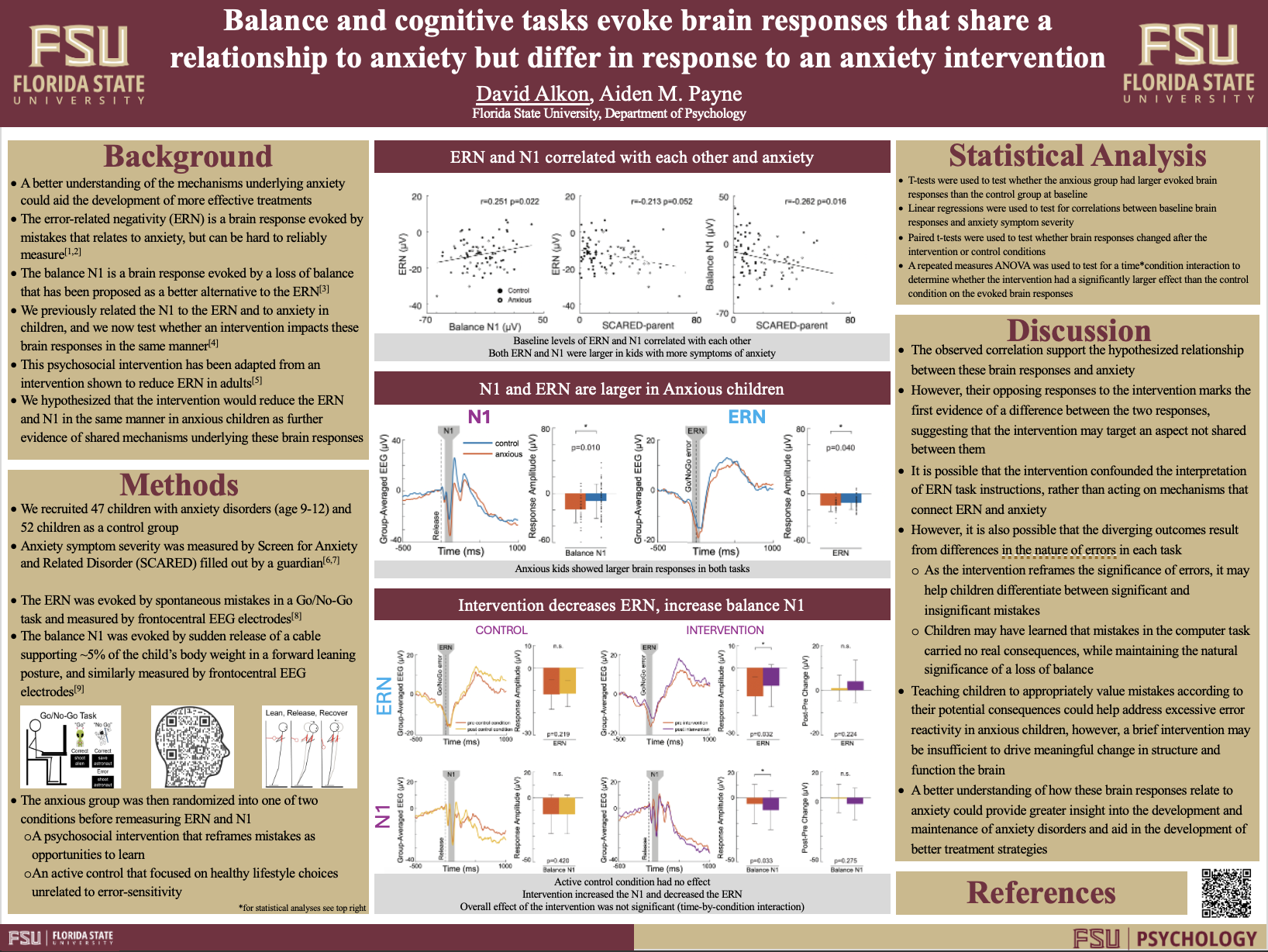Research Symposium
25th annual Undergraduate Research Symposium, April 1, 2025
David Alkon Poster Session 2: 10:45 am - 11:45 am/ Poster #90

BIO
My name is David Alkon, I am a senior Psychology major from Delray Beach. I chose psychology because I am interested in how the human mind and brain function, and how we can use our constantly expanding knowledge of these functions to create better life outcomes. Growing up I was a very anxious kid, so I am happy I got the chance to work on this project and contribute to our understanding of anxiety in childhood and how to better treat it.
Balance and cognitive tasks evoke brain responses that share a relationship to anxiety but differ in response to an anxiety intervention
Authors: David Alkon, Aiden PayneStudent Major: Psychology
Mentor: Aiden Payne
Mentor's Department: Department of Psychology Mentor's College: College of Arts and Sciences Co-Presenters:
Abstract
Understanding the mechanisms through which anxiety emerges in childhood could inform better treatment strategies.
The error-related negativity (ERN), a brain response to mistakes, has been suggested as a biomarker for anxiety. However, its measurement can be confounded by factors that are difficult to control.
The balance N1 is a brain response to balance disturbances that has been proposed as a better-controlled alternative to the ERN.
We previously showed that the N1 correlates with the ERN and anxiety at baseline. We now test the hypothesis that if they share underlying mechanisms, they should respond in the same manner to an intervention for anxiety.
Anxious children (age 9-12, N=47) were randomized into either a computerized psychosocial intervention that reframes mistakes as opportunities to learn or an active control condition. The balance N1 and ERN were measured by electroencephalography during balance and cognitive tasks before and after intervention.
The control condition had no effect on the N1 (Fz p=0.4202) or ERN (p=0.2189).
The intervention increased the N1 (p=0.033) and decreased the ERN (p=0.0317), but neither effect remained significant when compared against the effect of the control condition (time-by-condition interaction: ps>0.2).
Despite lacking evidence for the intervention’s efficacy relative to a control condition, the contrasting effects on the ERN and N1 suggest they may differ in mechanisms, or that the intervention aided in distinguishing between the nature of errors in each task . Further investigation of the mechanisms linking these brain responses to anxiety could inform the development of better treatment strategies.
Keywords: Anxiety, Balance, Anxiety Treatment,


